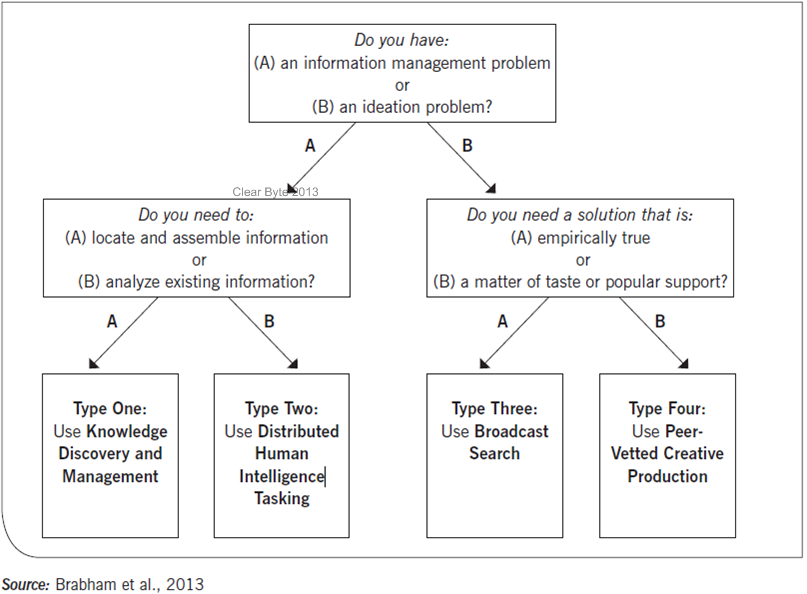This is the first article about how to use the power of crowdsoucing to create value to the public and public sector.
There are many good examples on how to use crowdsourcing in public sector. In a previous article, we described how US emergancy agency used crowdsourcing during hurricane Sandy to categorize and prioritize work depending on the information that the public sent to the command center. To understand what problem you have is just the first step of many needed to succeed in crowdsourcing and the ability to tap into the potential of distributed problem solving where the public can participate.
But to use and engaging the public is a bigger problem than just providing an app or a web service. There must be a clear objective of the task and what you want the public to contribute with. To do this, the organisation that initiates the task need to know what type of problem they need help with. Daren C. Brabham and others (2013) have developed a decision tree to assist and clarify the task that is at hand.

In the following articles we will describe in more detail what kind of tasks you can initiate in the four different categories. Based on our experience and that of scholars like Brabham and others. To give you some idea you need first to find out if you have an information and knowledge problems, or if you are looking for new ideas or solutions to problems. Information and knowledge problem may result in that you need help structuring existing information that you already have or to gather new information. The other part of the problem solving deals with tasks like empirical research, aesthetic proposals, draft new policies or vetting design of products. More on what this means and what tools and processes that are best suited will be discussed in future articles.
